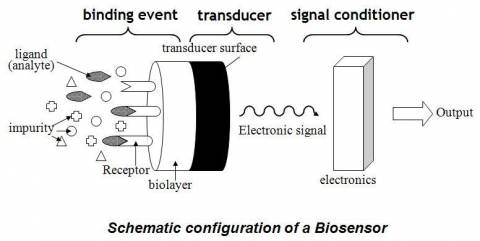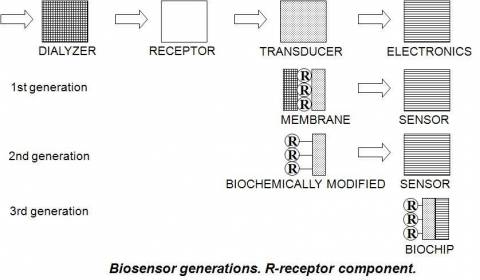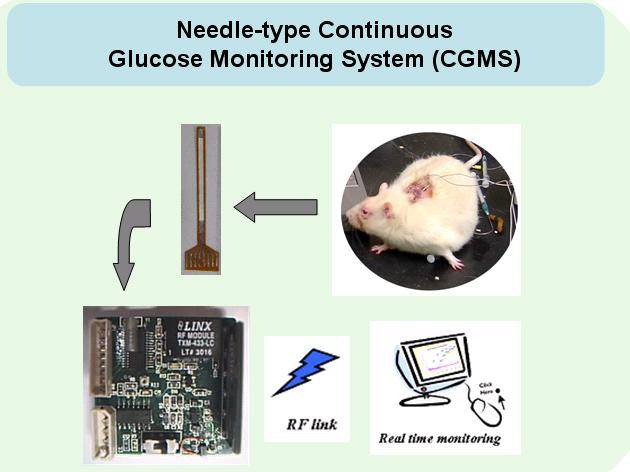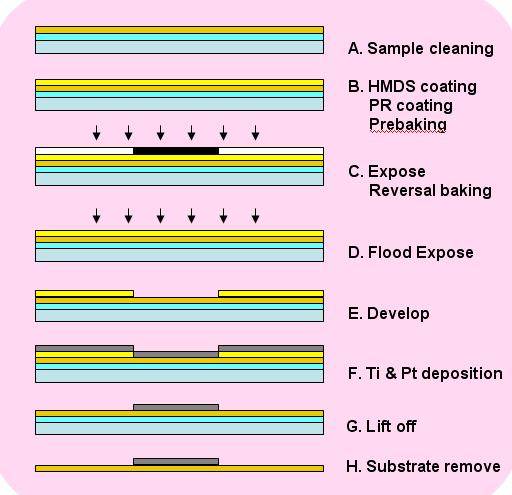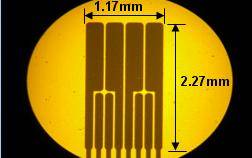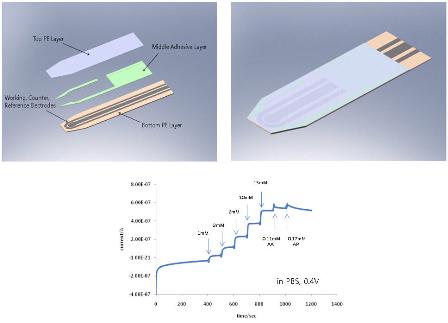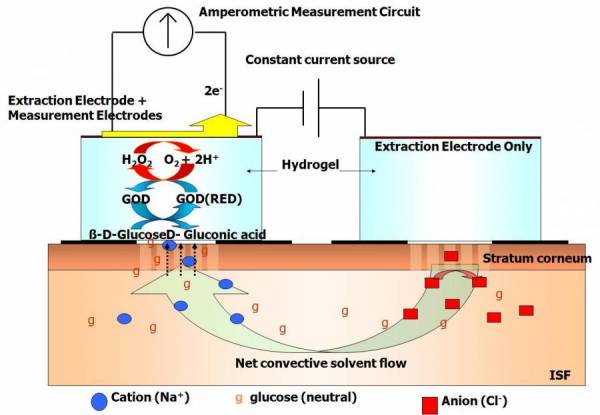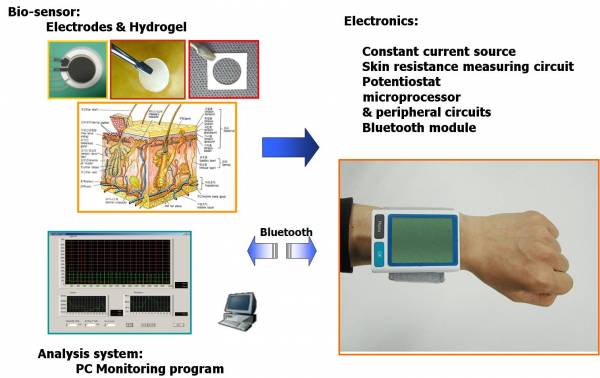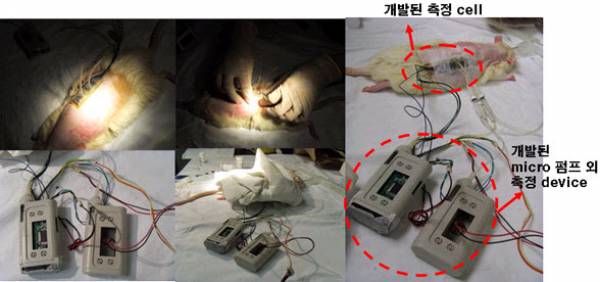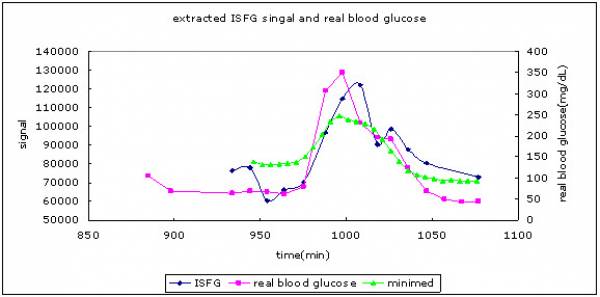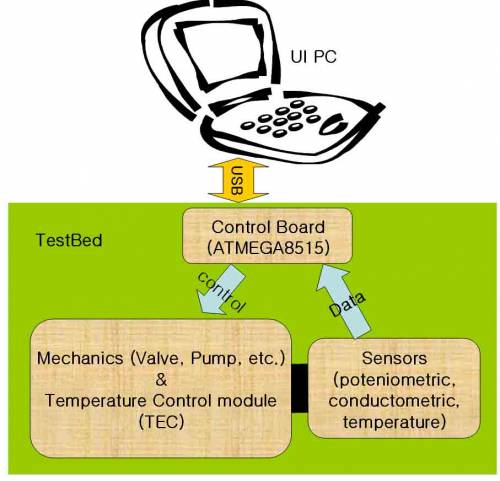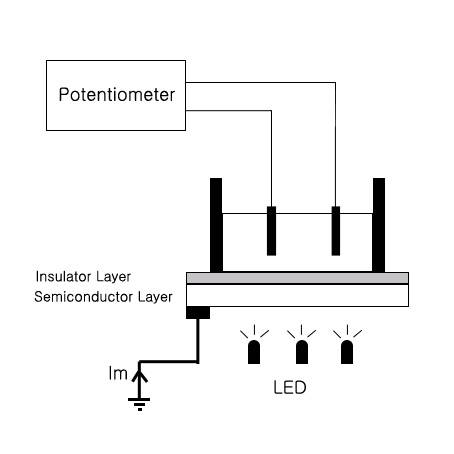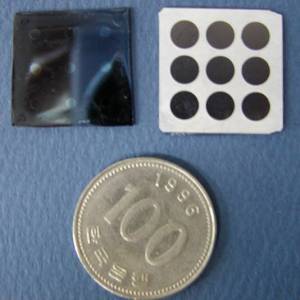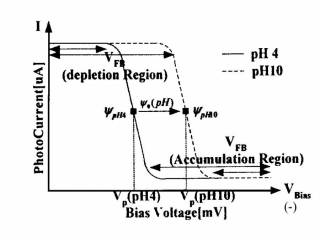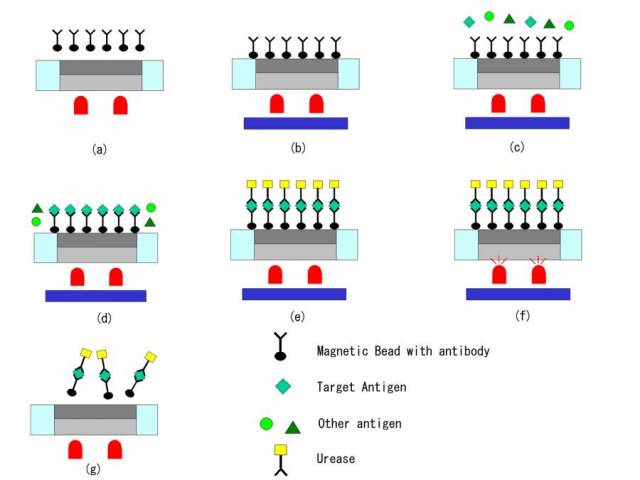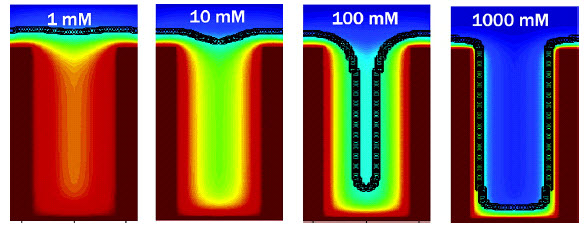Biosensor
A biosensor is a device for the detection of an analyte that combines a biological component with a physicochemical detector component.
It consists of 3 parts:
the sensitive biological element (biological material (eg. tissue, microorganisms, organelles, cell receptors, enzymes, antibodies, nucleic acids, etc), a biologically derived material or biomimic) The sensitive elements can be created by biological engineering. the transducer in between (associates both components) the detector element (works in a physicochemical way; optical, piezoelectric electrochemical, thermometric, or magnetic.) The most widespread example of a commercial biosensor is the blood glucose biosensor, which uses an enzyme to break blood glucose down. In doing so it transfers an electron to an electrode and this is converted into a measure of blood glucose concentration. The high market demand for such sensors has fueled development of associated sensor technologies.
Recently, arrays of many different detector molecules have been applied in so called electronic nose devices, where the pattern of response from the detectors is used to fingerprint a substance.
A canary in a cage, as used by miners to warn of gas could be considered a biosensor. Many of today's biosensor applications are similar, in that they use organisms which respond to toxic substances at a much lower level than us to warn us of their presence. Such devices can be used both in environmental monitoring and in water treatment facilities.
2. Pioneer of Biosensors: Glucose sensor
3. Biosensor generations
Ongoing Project
Continuous Glucose Monitoring
Schematic
Principle
Fabrication Schematic
Image of Sensing Part
Disposable Glucose Measurment
Summary
Elapsed Projects
Noninvasive Glucose Monitoring
Working Principle
Schematic
In Vivo Test: Setup and Result
Blood Gas and Electrolyte Analyzer
Ion and hematocrit concentration in blood has important clinical meaning. There are currently many blood gas and electrolyte analyzer products, and we are now developing portable, low power-consuming analyzer. The analyzer under development uses potentiometric and conductometric methods, and we have developed Testbed for experimental use. The concept figure of Testbed is as follows
Schematic
LAPS(Light Addressable Potentiometric Sensor)
The LAPS is a kind of the ion-sensitive field effect transistor (ISFET), which has a electrolyte /insulator /semiconductor structure. By illuminating parts of the sensor surface with infrared light, a photocurrent flow of which the amplitude depends on the local surface potential or local pH value. In this way, the surface potential distribution can be obtained by scanning the light pointer across the surface of LAPS.
* What is LAPS? : HyunSeok Moon
noxtopia@melab.snu.ac.kr 2007/01/11 17:54
